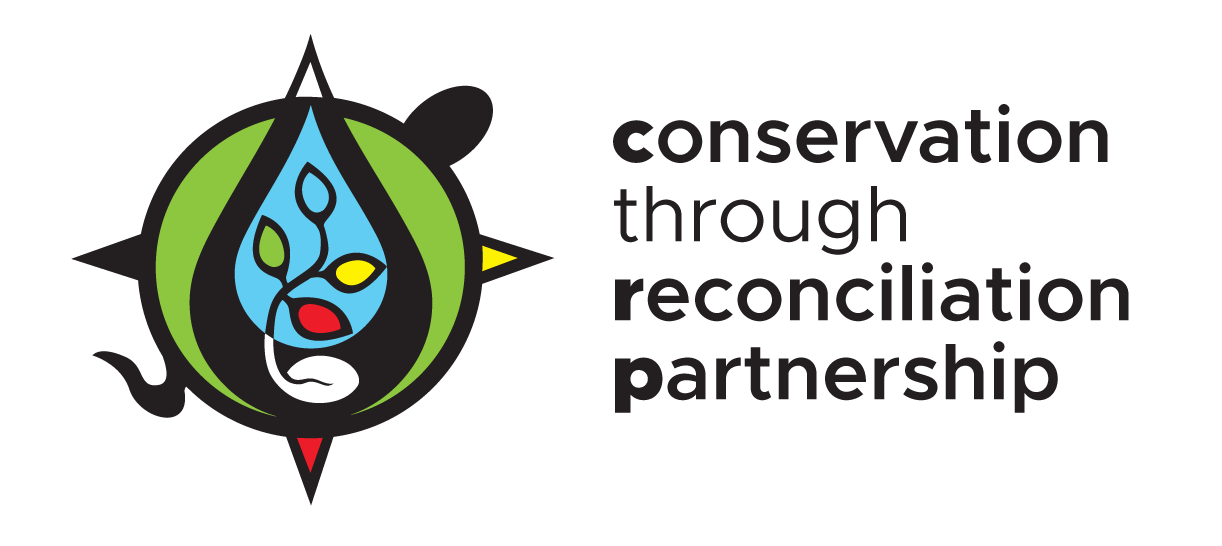Indigenous Conservation Governance in Southeast Asia: The Case of Salween Peace Park
By Andrew Paul and the Karen Environmental and Social Action Network
September 20, 2022

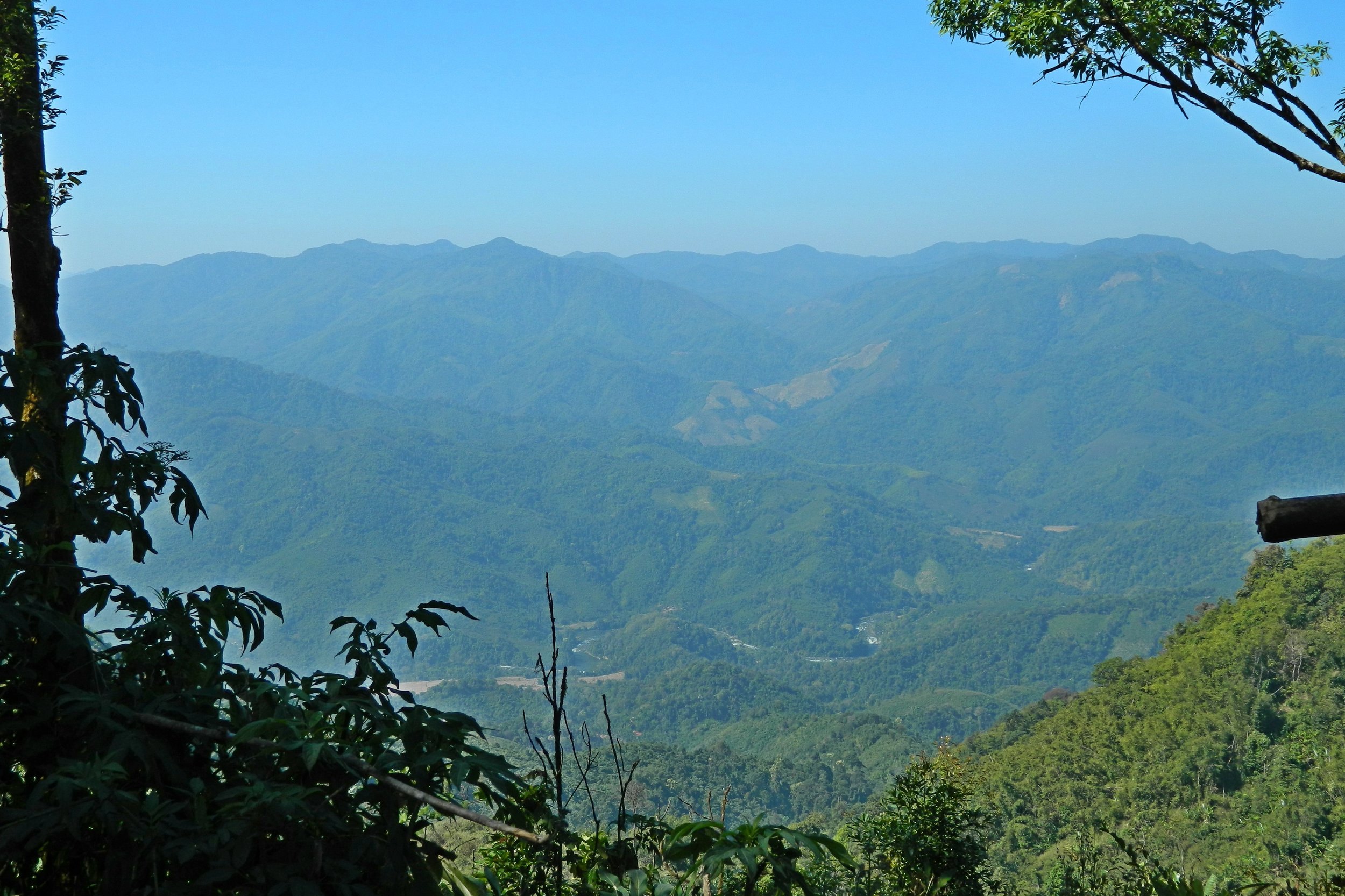

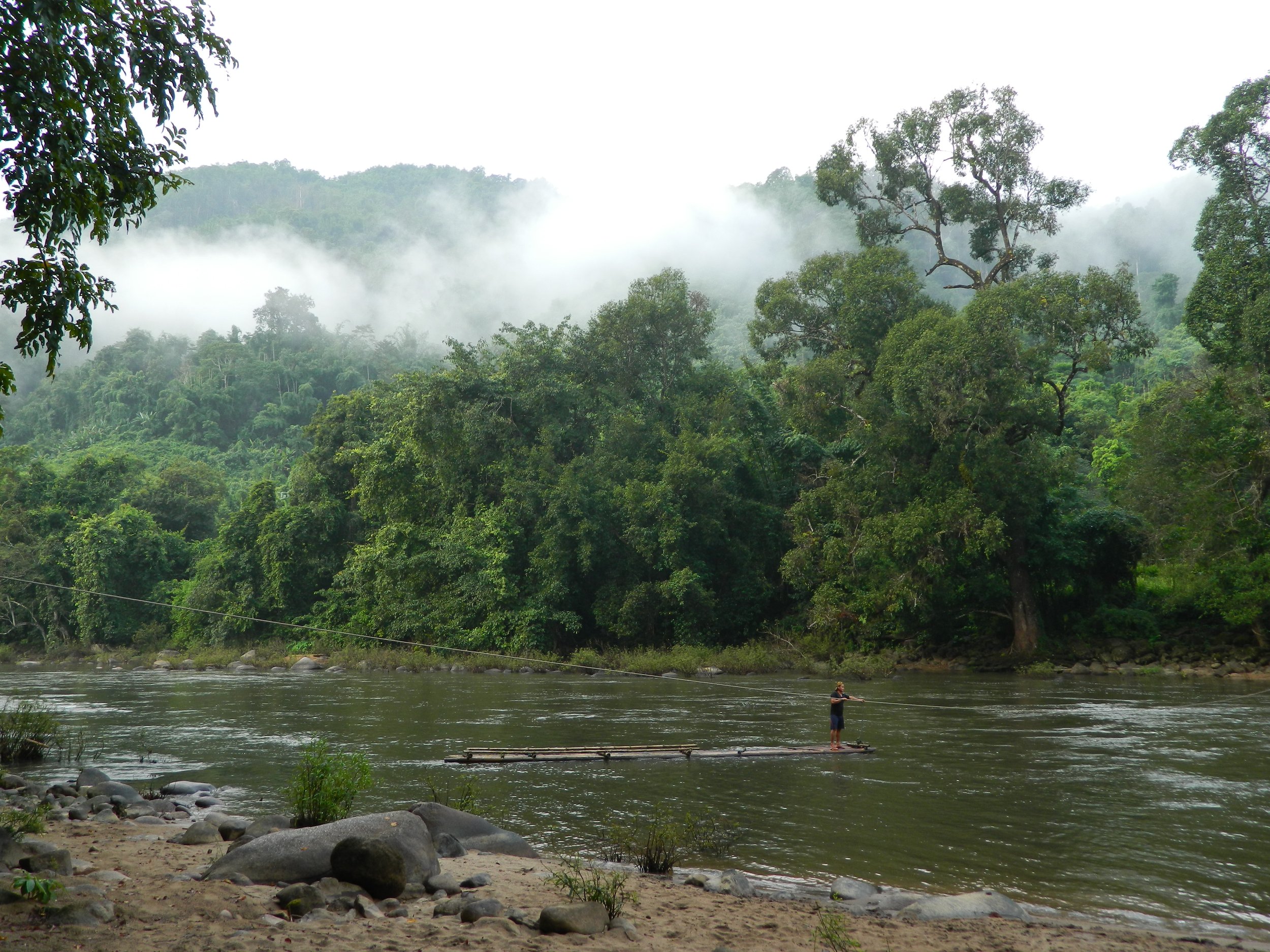
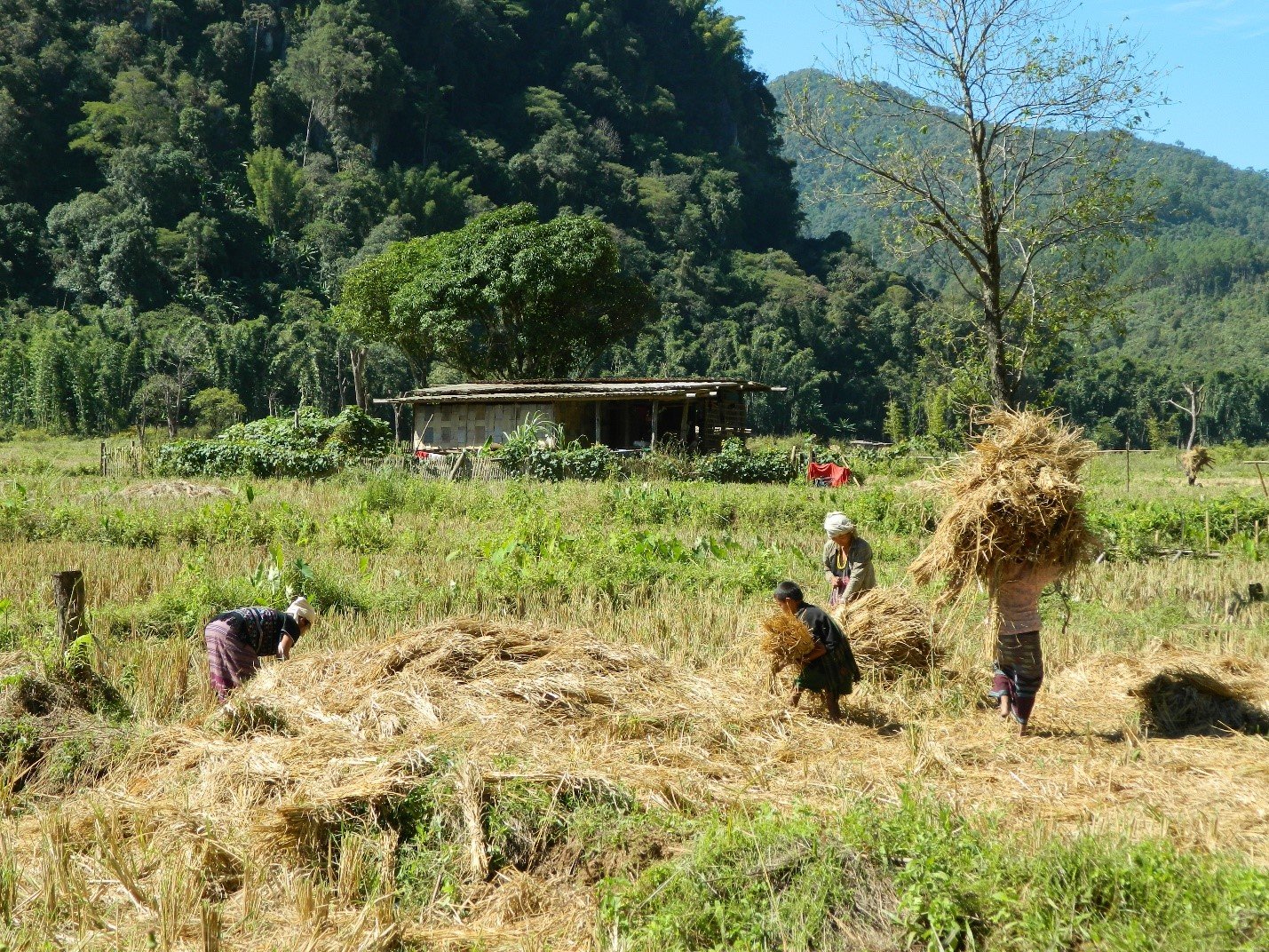
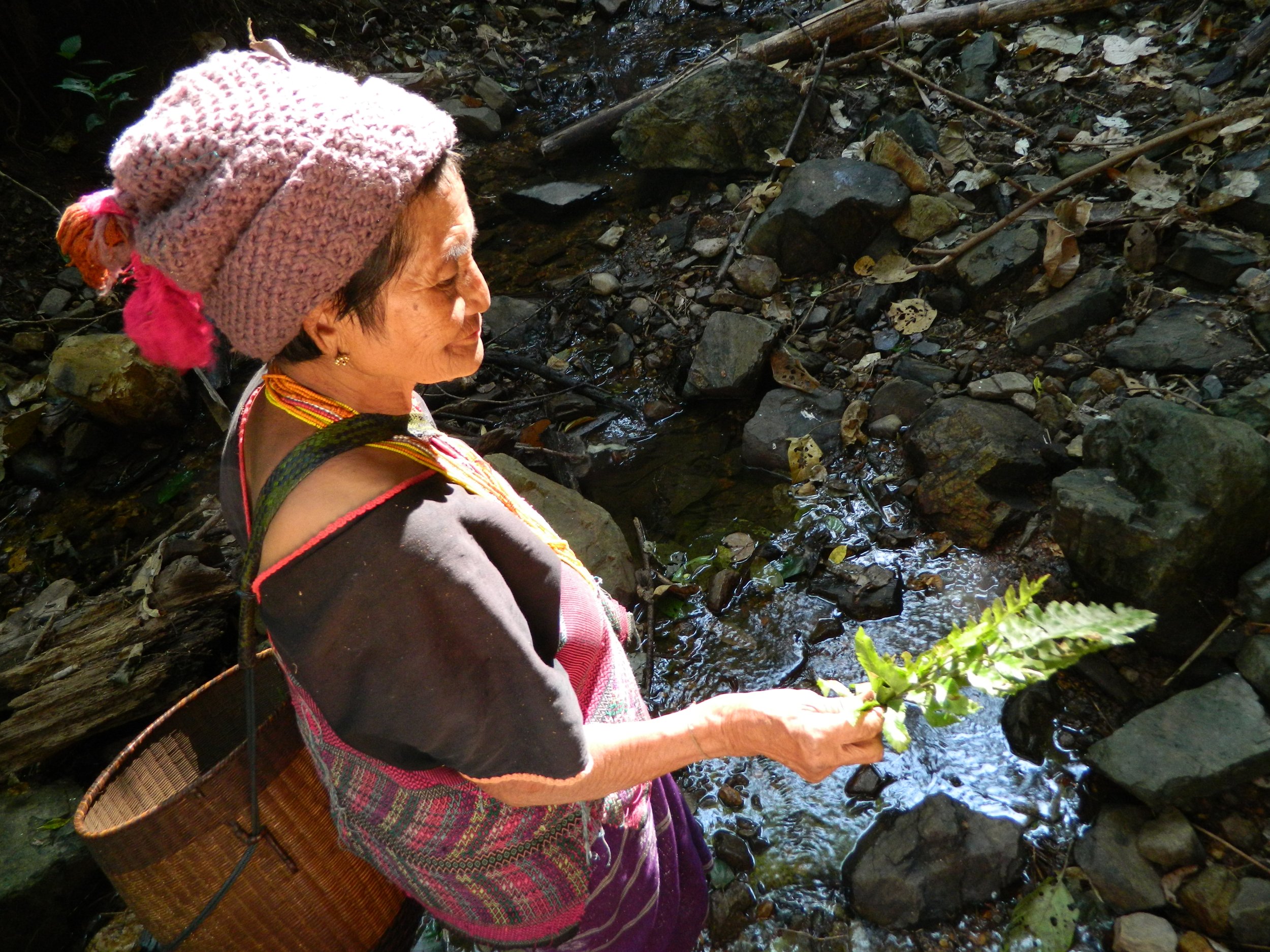
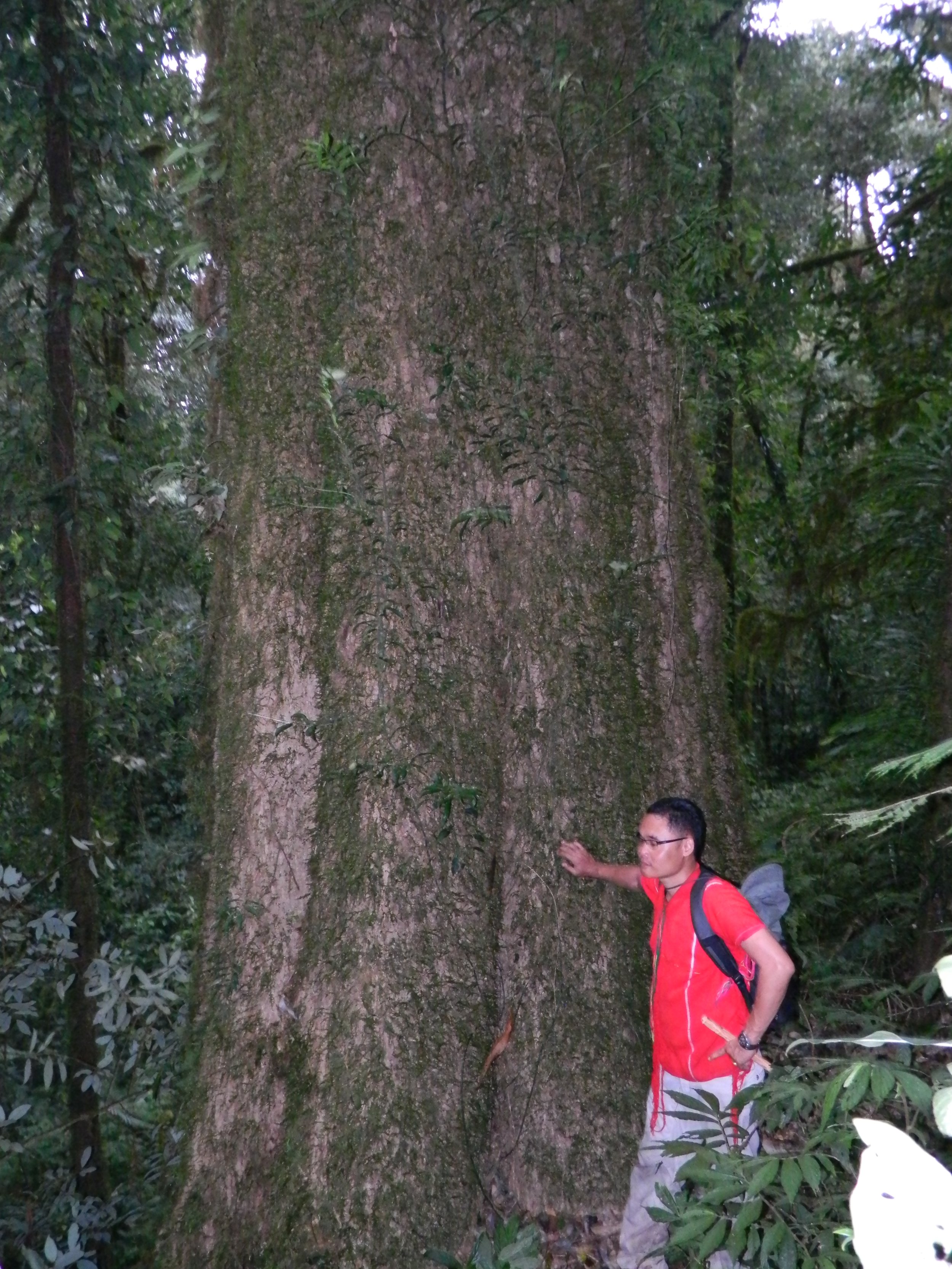
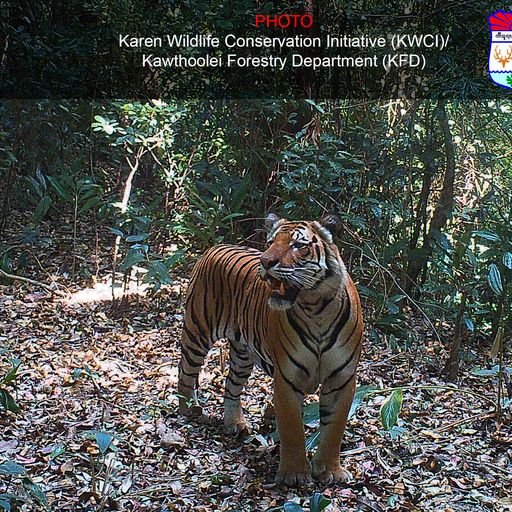
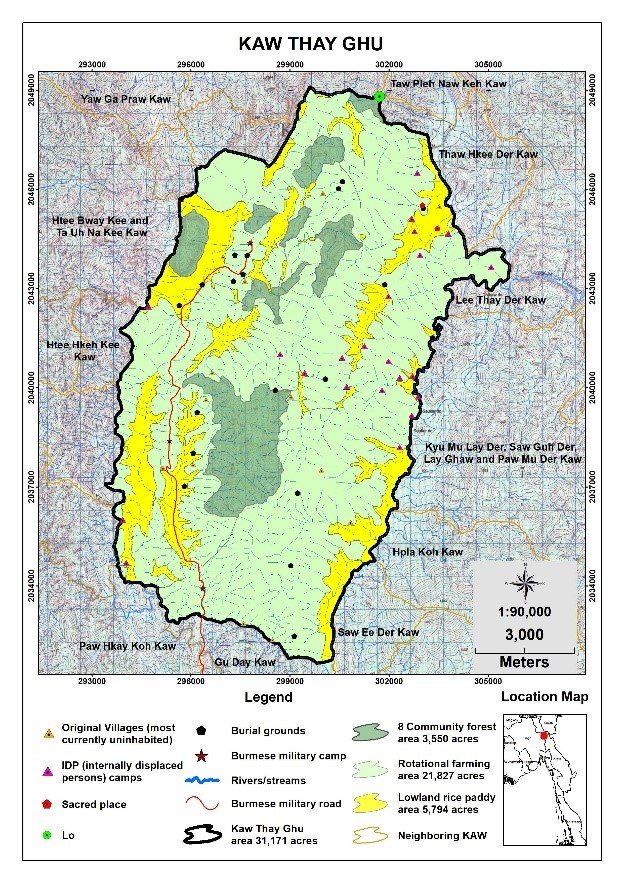
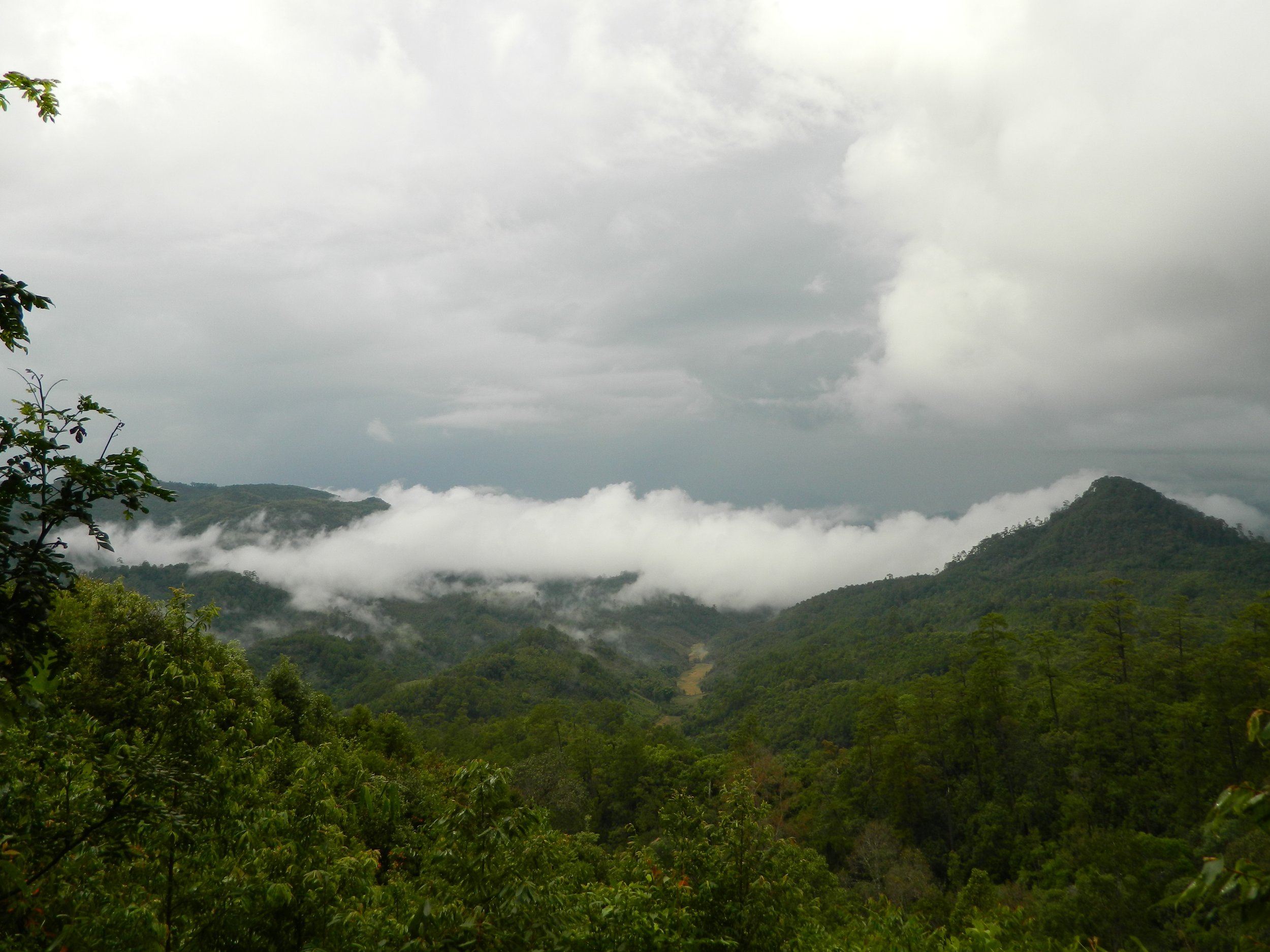
Indigenous Protected and Conserved Areas (IPCAs) - internationally known as territories and areas conserved by Indigenous Peoples and local communities, ICCAs, or Territories of Life - are Indigenous acts of self-determination grounded in Indigenous laws. These laws in turn are rooted in the reciprocal relationships between Indigenous Peoples and their lands, waters, and ancestral territories. However, it can be challenging to communicate these Indigenous laws and land relationships in ways that potential conservation allies can understand.
In this multi-media blog, we invite you on a journey across the ocean. We invite you to a vast IPCA in the Indigenous Karen territory of Kawthoolei, on the border between Thailand and Burma (Myanmar) in Southeast Asia. We invite you to the Salween Peace Park.
Key Facts:
· Salween Peace Park is an Indigenous project for peace, self-determination, and biocultural conservation in a war zone.
· Salween Peace Park is a large and complex IPCA, comprising hundreds of Indigenous community territories.
· Salween Peace Park is developing a democratic, multi-level IPCA governance framework grounded in Indigenous laws and local community protocols.
Welcome to Salween Peace Park
Burma might seem an unlikely place to find inspiring Indigenous conservation models. When international news media pay attention to Burma at all, it is usually for human rights disasters such as genocide, massacres, and of course the explosion of violence following the February 2021 military coup. However, amidst this chaos, Indigenous Peoples and local communities continue to advance their own visions for self-determination, peaceful coexistence, and protection of ancestral territories. The Salween Peace Park is one of these innovations.
At 5,485 square kilometres, the Salween Peace Park is among the largest and most complex IPCAs in the world. It is home to 348 villages and nearly 70,000 people. The park has emerged through an Indigenous-led vision for peace amidst more than 70 years of ongoing war and state military violence against the Karen nation.
The Karen Environmental and Social Action Network (KESAN) is an integral partner in the Salween Peace Park. We have been working with Karen communities, hereditary leaders, and administrators to develop Indigenous Karen protocols into management plans, governance structures, and regulations. It is our hope that the Karen experience can help inspire and inform ongoing IPCA governance efforts in Canada.
The following video offers a brief visual introduction to the people, places, and vision of the Salween Peace Park.
This video provides an introduction to the Salween Peace Park - a collaborative initiative involving over 300 representatives from 23 village tracts in the 3 townships of Mutraw District; the Mutraw District's Forestry Department; and one of Myanmar's leading environmental organizations, the Karen Environmental and Social Action Network (KESAN).
The Context
Salween Peace Park is being developed in the territory of the Karen National Union (KNU). The KNU is an armed revolutionary organization formed to defend Karen lands and communities from Burmese military attacks. However, the KNU is much more than an army. It is an Indigenous administration that includes health, education, lands, forests, and natural resources.
The Salween Peace Park was formally established in December 2018 by the KNU, local communities, and Karen civil society. To date, there has been no formal engagement with the Burmese state, which remains hostile to Karen aspirations.
Despite the lack of formal recognition, the Karen nation’s efforts have gained international attention. In 2020, the Salween Peace Park joined Thaidene Nëné and eight other Indigenous initiatives as winners of the United Nations Development Programme’s Equator Prize. The chairperson of the Salween Peace Park, Saw Paul Sein Twa, was also awarded the Goldman Environmental Prize.
The video below provides more details on the establishment of the Salween Peace Park in the context of the global Indigenous-led conservation movement.
This video captures the celebration of indigenous Karen communities of Mutraw District as they officially declare the establishment of the Salween Peace Park on December 18, 2018. This declaration is to fulfill the collective vision for a grassroots pathway to peace and self-determination, and their responsibility to transfer our ancestral domain to the new generation with abundant forest and clean water.
Karen Kaw Territories: Uplifting Indigenous Law and Land Relationships
"IPCAs are lands and waters where Indigenous governments have the primary role in protecting and conserving ecosystems through Indigenous laws, governance and knowledge systems."
-- We Rise Together, Indigenous Circle of Experts 2018, p. 5
Indigenous laws originate in the relationships and responsibilities of Indigenous Peoples to each other and the more-than-human world. In the Salween Peace Park, these relationships are represented in the Kaw. As a concept, Kaw refers both to a community territory and a governance system. Cultural prohibitions (taboos) and ceremonial protocols govern human actions within the Kaw, protecting sacred forests and watersheds.
These Indigenous Karen laws have maintained some of the richest wildlife populations and their forest habitats remaining in mainland Southeast Asia. In Salween Peace Park, an Indigenous Wildlife Guardians program has been established.
This video below provides a brief overview of the Kaw governance system.
This video provides an introduction to the Karen "Kaw" and their way of life, their tradition, culture, wisdom, and taboos has sustain our environment.
Like Canada, Burma has a long history of colonial violence. Since British colonial rule ended in 1948, successive Burmese governments have tried to seize Indigenous territories and plunder the land’s natural resources. Government forces have committed extreme violence, including forced displacement, destruction of villages, rapes, massacres, and more. Hundreds of thousands of Karen have become refugees around the world, with several thousand now living in cities across Canada.
In Karen territories in Burma, decades of war and displacement have undermined Karen traditional land relationships. Kaw communities are now turning traditional protocols into community land codes and establishing formal Kaw committees. Villagers have created community forests and fish conservation areas. Communities are also mapping Kaw territories with GPS technology. In April 2022, the KNU administration issued the first communal Kaw title certificates.
Cultural revitalization is also an essential part of building IPCA governance in the Salween Peace Park. A flagship Traditional Culture School passes on Karen Indigenous knowledge, cultural handicrafts, and ceremonial protocols to youth and children in the community. These are all integral to maintaining the life-giving relationship between Karen people and their land.
As demonstrated in the map below, the Salween Peace Park consolidates existing community-based conservation efforts into a unified vision for building peace, protecting the land, and upholding the Indigenous Karen culture and way of life. To date, 248 Kaw territories encompassing more than one million acres have been demarcated in the Salween Peace Park. The peace park also includes 34 community forests and three wildlife sanctuaries. Efforts are underway to reform management of the peace park’s eight reserved forests, most of which date to the British colonial era in Burma.
Map of Salween Peace Park
Community leaders, Karen civil society, and KNU authorities worked for more than two years to develop the Charter of the Salween Peace Park. The Charter’s 118 articles include provisions for environmental protection, cultural heritage conservation, food sovereignty, land-based livelihoods, sustainable community development, demilitarization, refugee return, and more.
The Charter of the Salween Peace Park empowers each self-defined Kaw community to develop their own rules and regulations for their territory. It promotes what Tla-o-qui-aht leader Eli Enns has called the essential economy of IPCAs: clean air, clean water, and healthy food. The Charter also provides for inclusive public decision-making processes regarding any activities affecting the lands, waters, and communities of the park.
The Charter was ratified by the Salween Peace Park’s inhabitants through a popular referendum. The park’s boundaries have expanded several times as more communities join the initiative. All communities who choose to join the Salween Peace Park agree in good faith to abide by the Charter.
The Charter of the Salween Peace Park thus enacts IPCA governance at multiple overlapping scales. It creates a framework for large landscape conservation by and for Indigenous communities.
Inclusiveness in Governance
The Charter establishes the General Assembly as the collective decision-making body in the Salween Peace Park. As illustrated in the following diagram, the General Assembly includes representatives from the KNU administration, Karen civil society, and villages within the peace park. The General Assembly in turn elects the Salween Peace Park Governing Committee, which serves as the executive body. Hereditary and ceremonial leaders ensure that Kaw protocols and social-spiritual relations with the land are upheld at every level in this large and complex IPCA.
A diagram of the Salween Peace Park governance structure.
The following video provides more detail on how multilevel democratic governance works in the Salween Peace Park, from election of local community representatives to the creation of the Salween Peace Park Governing Committee.
This video documents an exercise in genuinely representative democracy, where a man and a woman from each of the 26 village tracts in Mutraw District in Karen State will voice their community’s vision and concerns towards realizing the dream of the Salween Peace Park.
The General Assembly meets at least once a year to continue the democratic process of developing the Salween Peace Park. Topics of discussion include biodiversity conservation, cultural revitalization, food security, community development, and demilitarization.
The Salween Peace Park is an innovation in grassroots democracy and decision-making by and for Indigenous Peoples, on a grand scale. As such, it joins similar initiatives elsewhere in Karen territories, including the Tanawthari Landscape of Life and the Thawthi Taw Oo Indigenous Park, as well as the Thaw Thee Phgaw Ghaw Peace Park in neighbouring Karenni State.
Indigenous Conservation in a Conflict Zone
The Karen people have refused to be dominated and controlled by the Burmese military state. Instead, they are (re)building sovereign Indigenous governance in the Salween Peace Park. However, the Salween Peace Park remains heavily occupied by nearly 70 Burmese military camps. The trauma of more than 70 years of war and military brutality hang heavy here.
Salween Peace Park has not been spared the explosion of violence since Burma’s military coup in February 2021. Day Bu Noh village, the headquarters of the Salween Peace Park, was bombed by the Burmese Air Force in March 2021. Most of the Salween Peace Park’s inhabitants are either hiding in the jungle or ready to flee their homes at a moment’s notice.
In the face of these attacks, Indigenous Karen communities’ relationships with their ancestral territories are a source of strength and resilience. Salween Peace Park continues to shine a light for Indigenous self-determination, peaceful coexistence, and federal democracy in Burma. Despite ongoing conflict, the third annual General Assembly of the Salween Peace Park was held successfully from December 2-4, 2021. Delegates debated and approved Salween Peace Park’s expansion to include additional villages and Kaw territories.
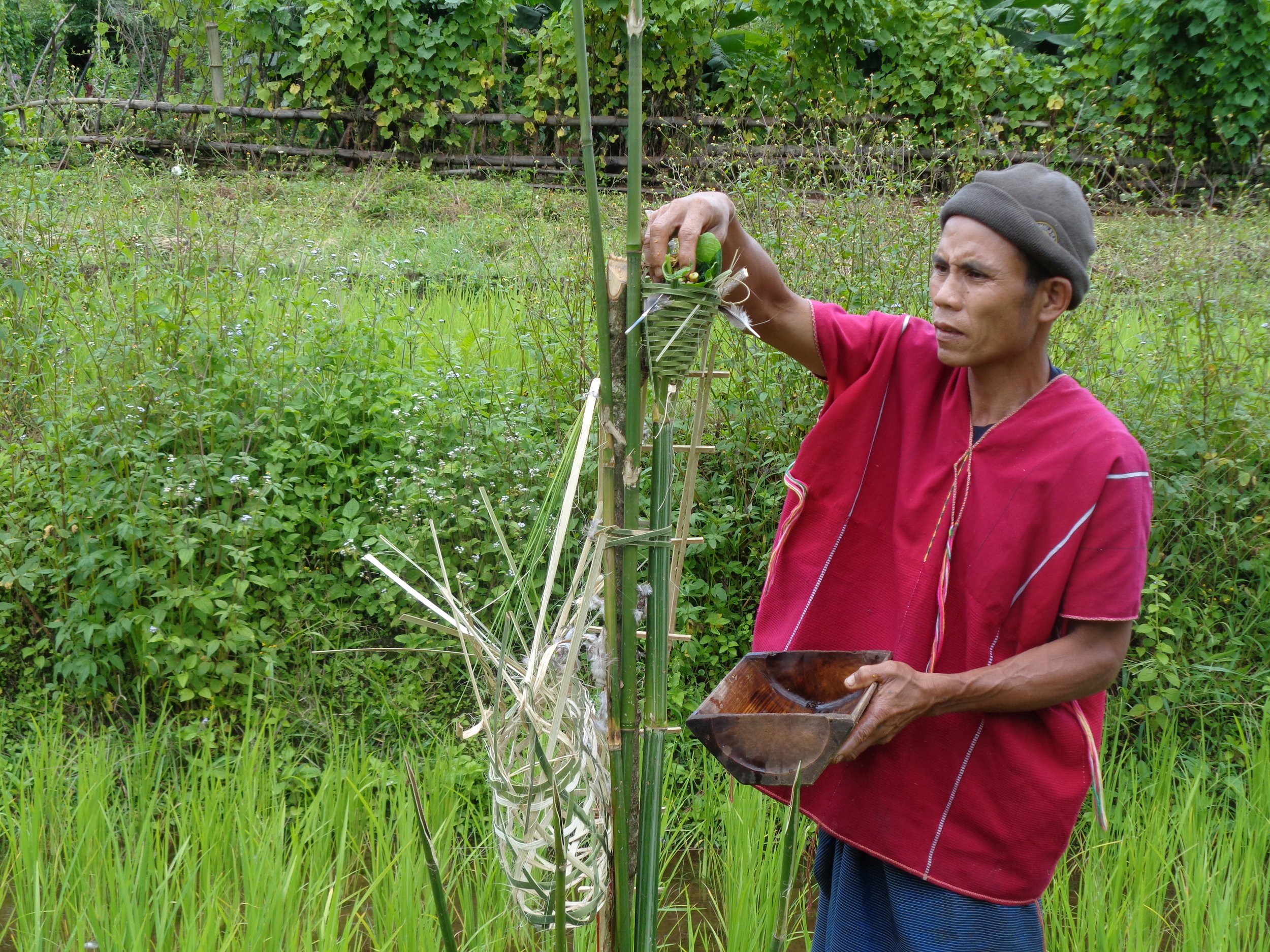
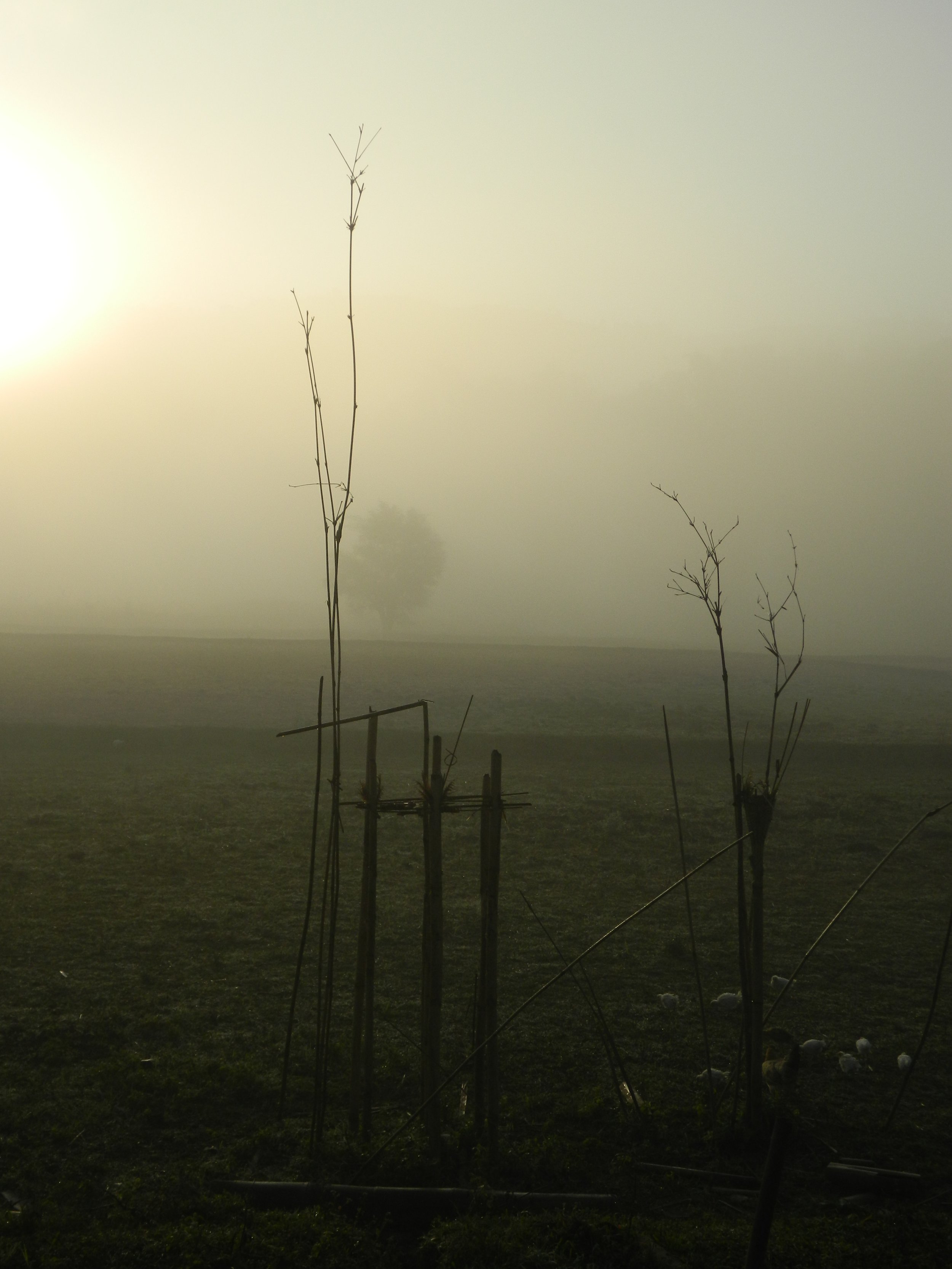
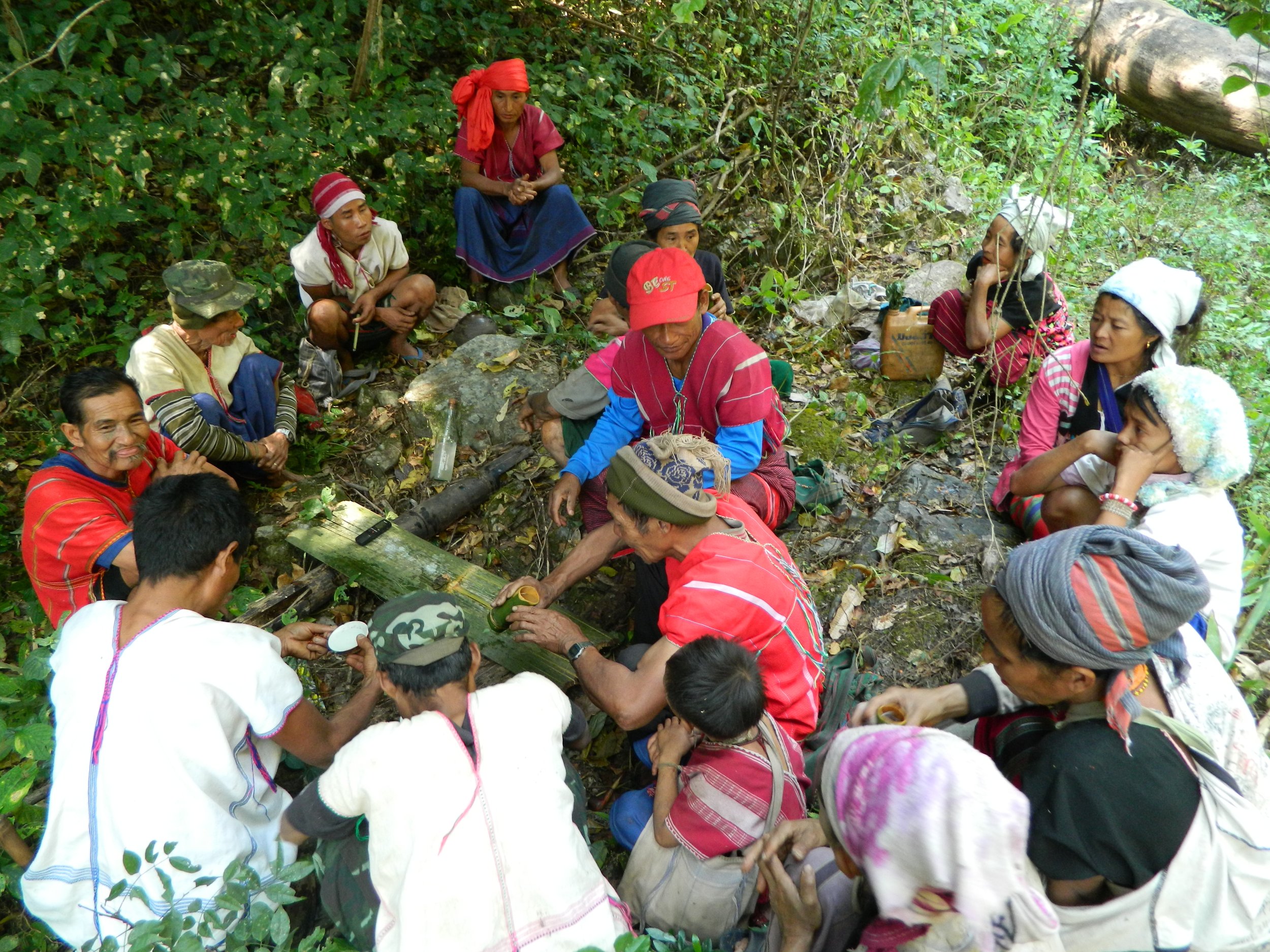
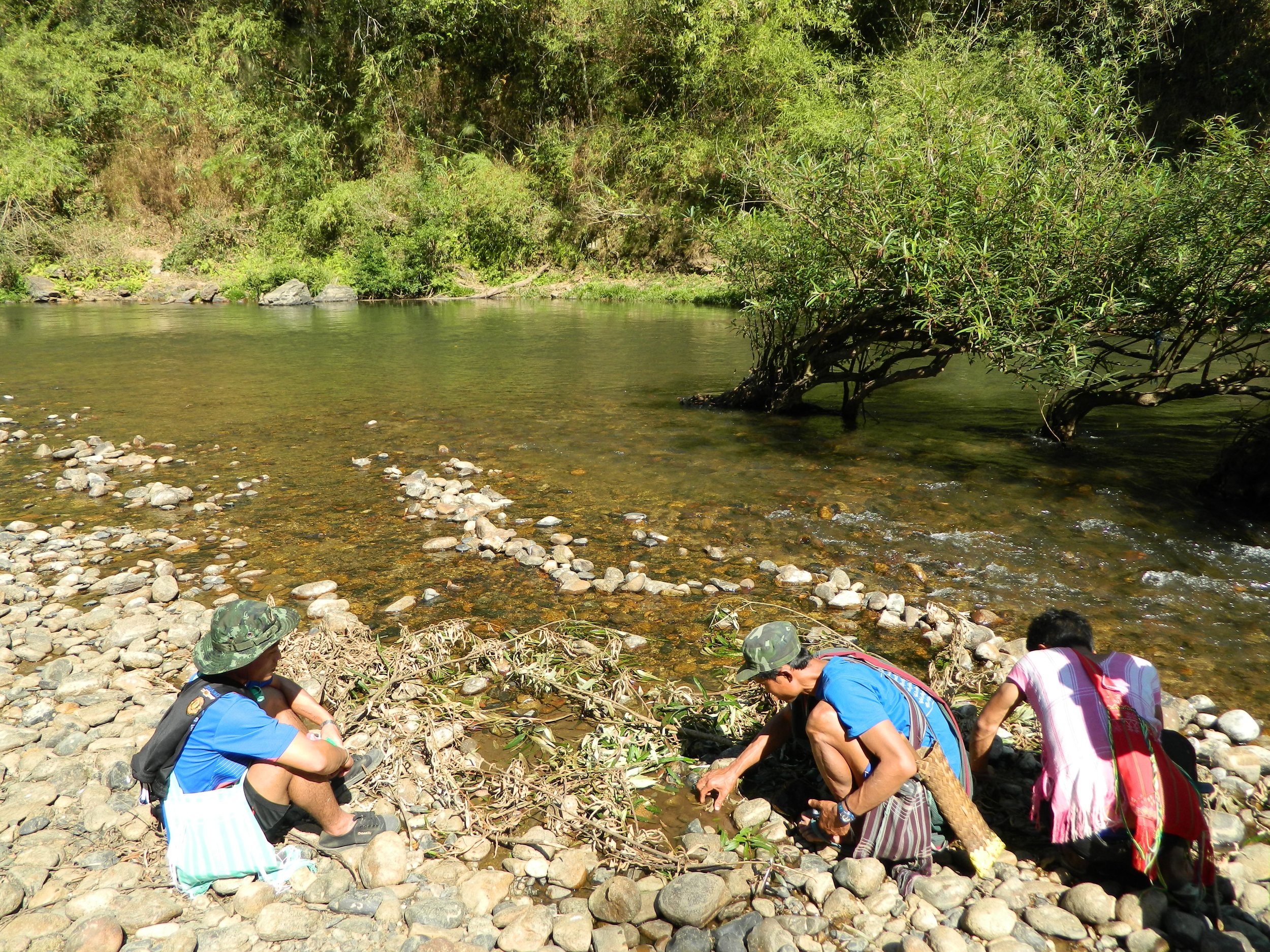
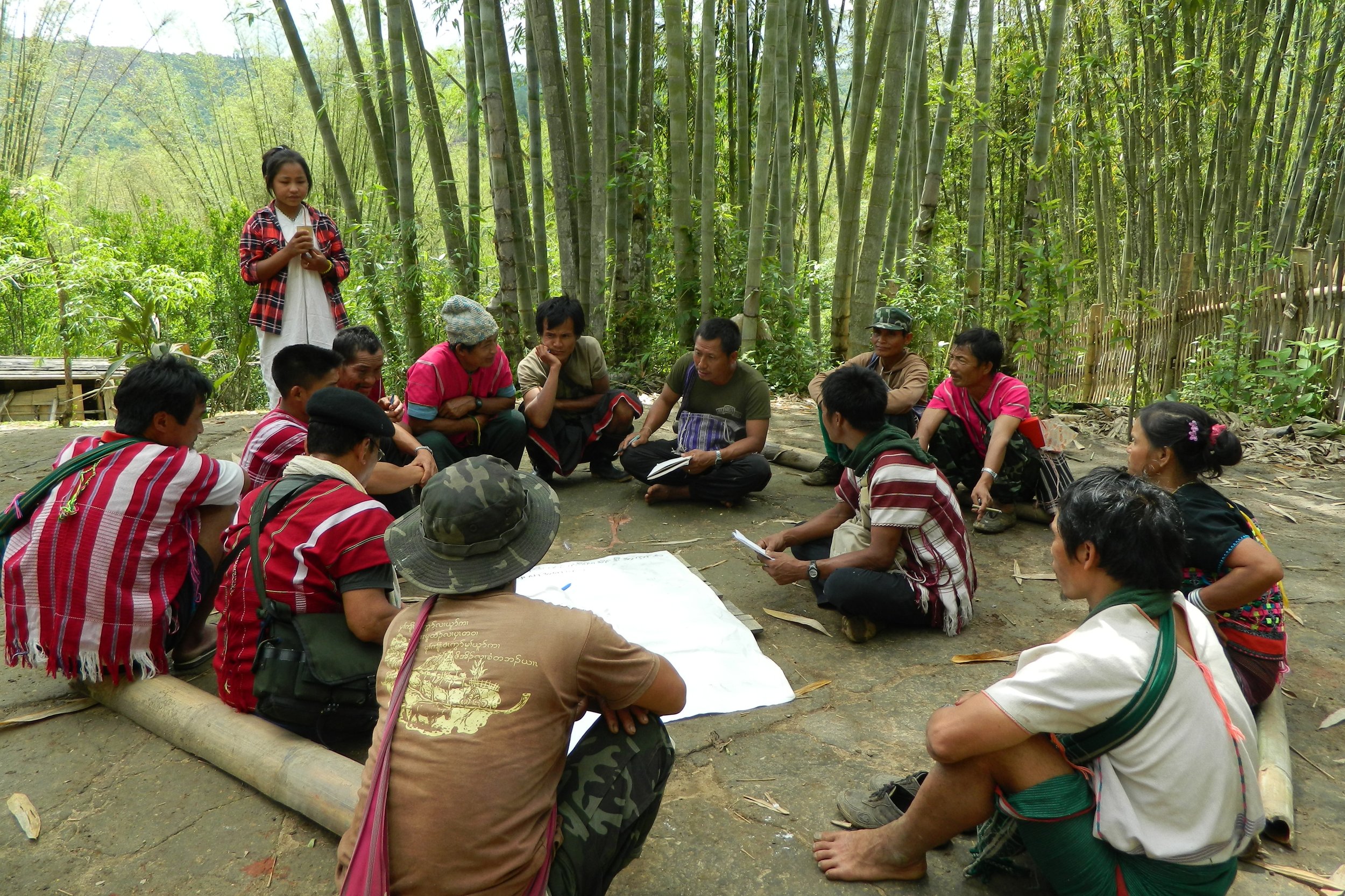
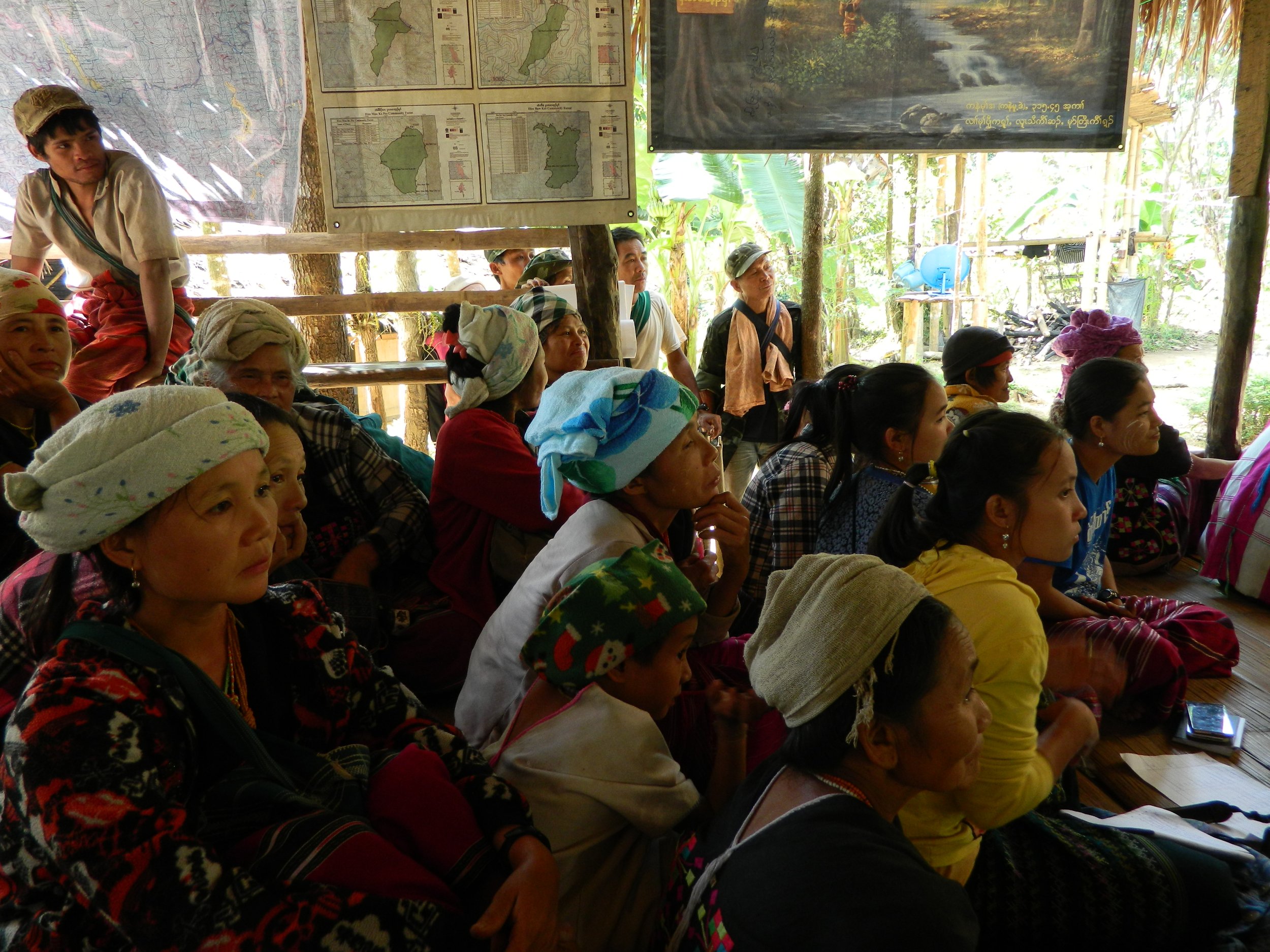
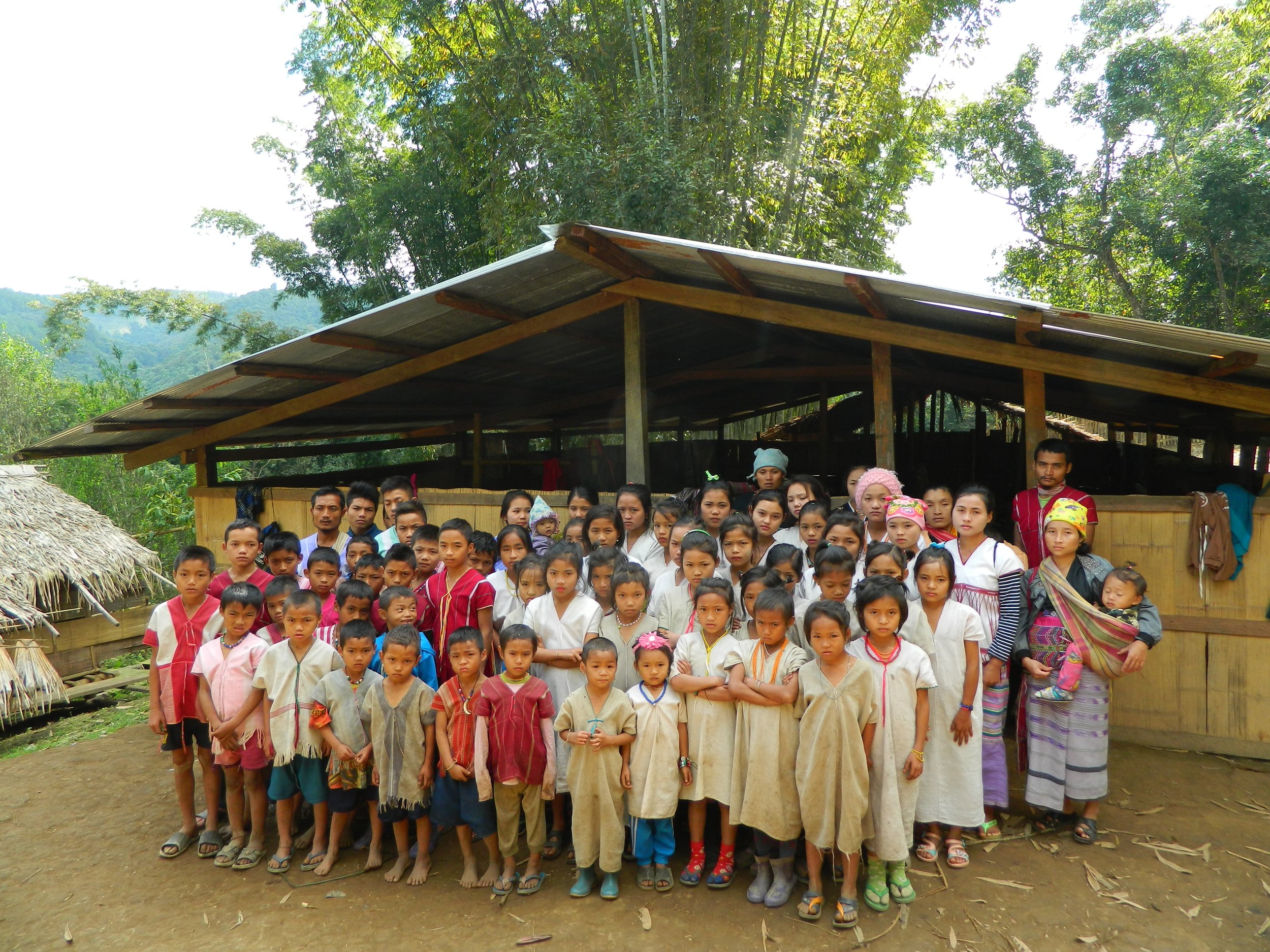
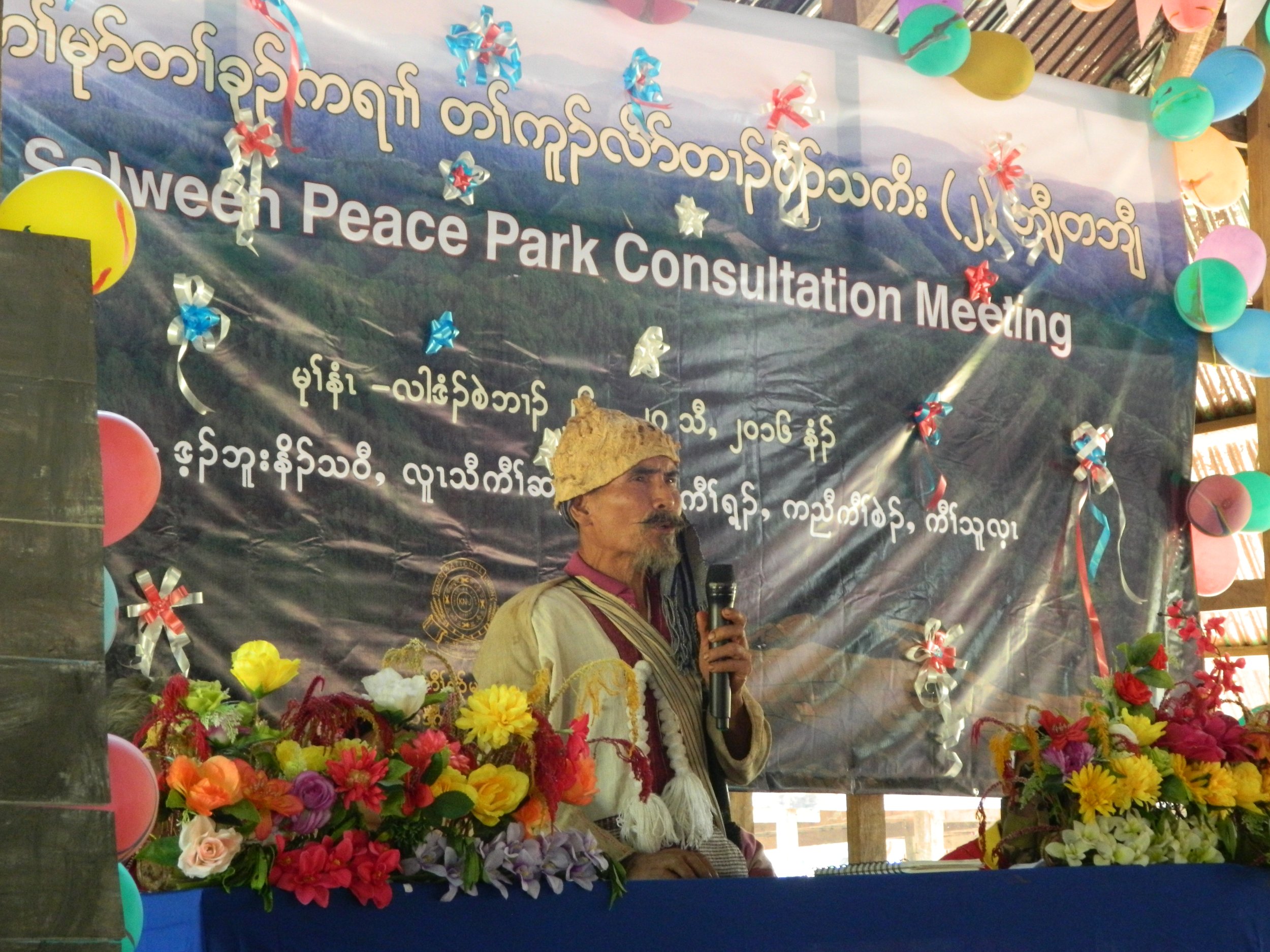
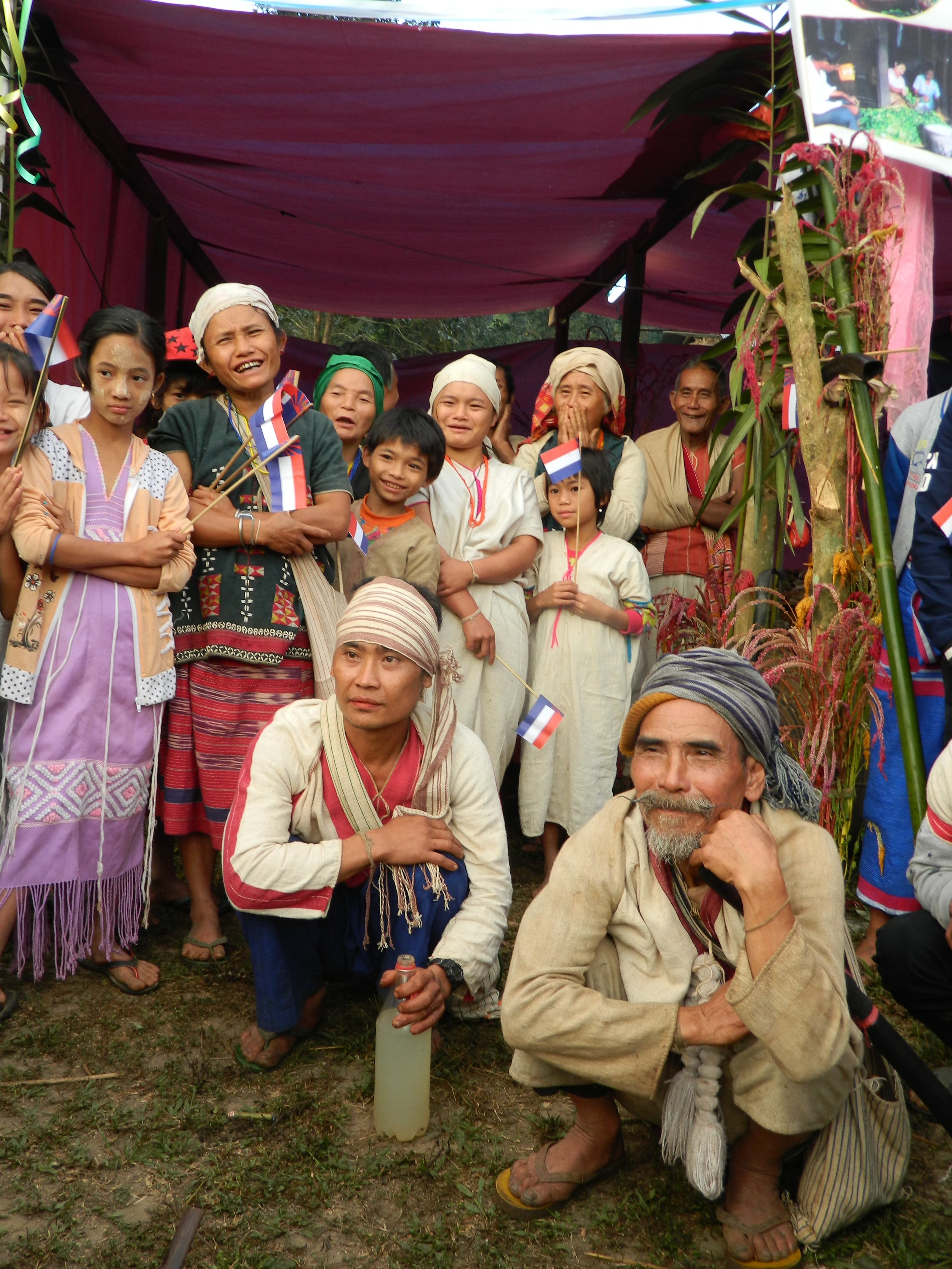
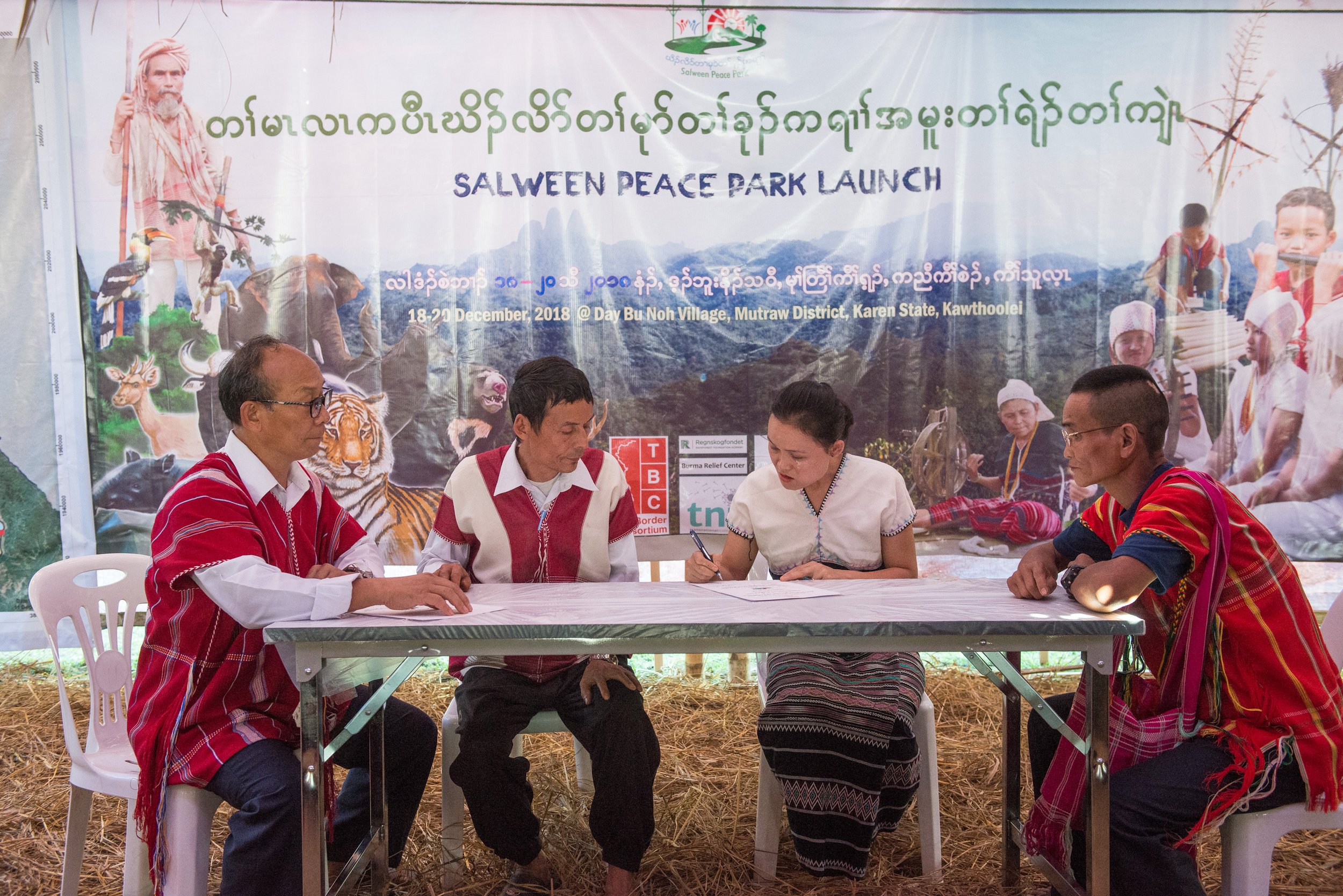
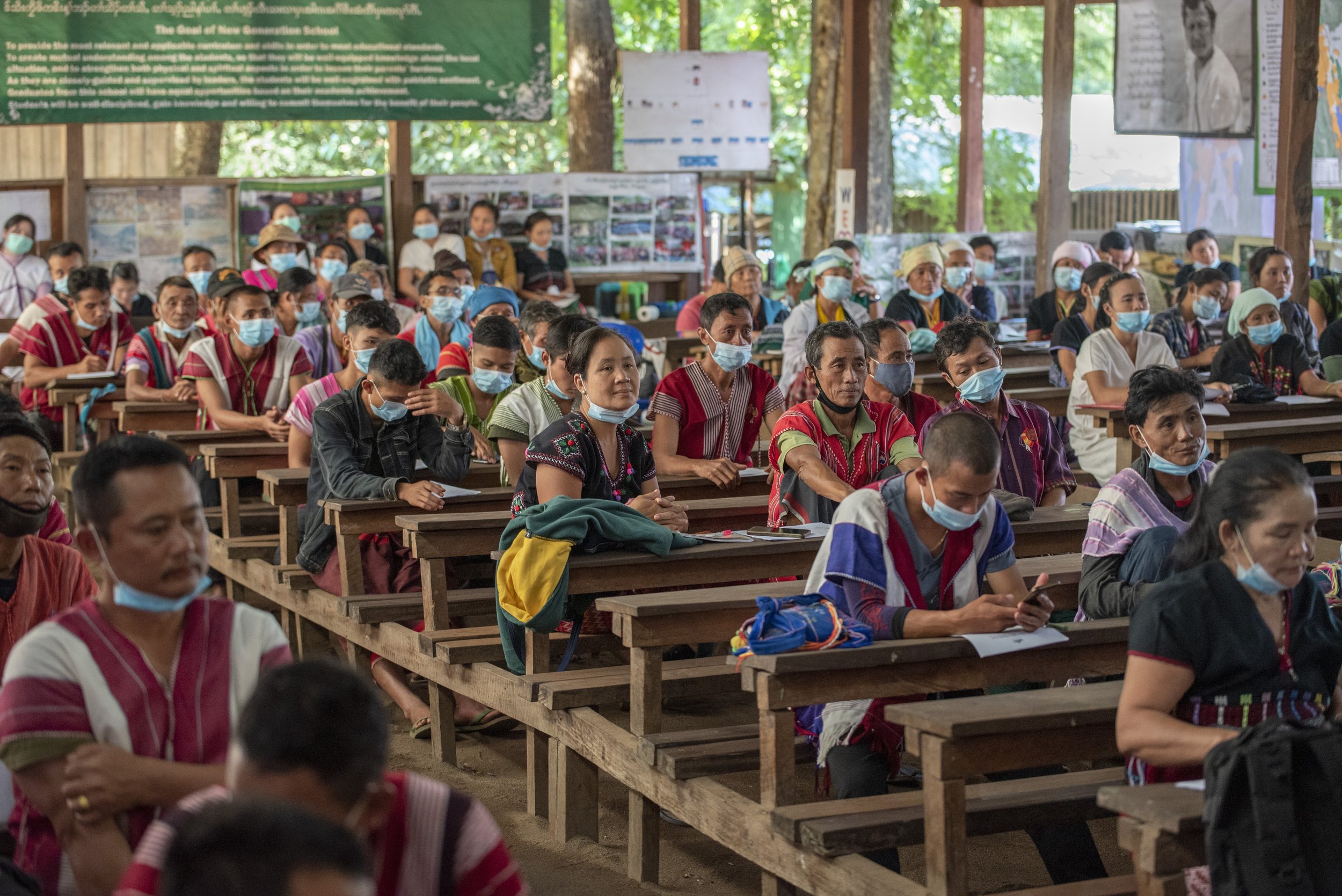
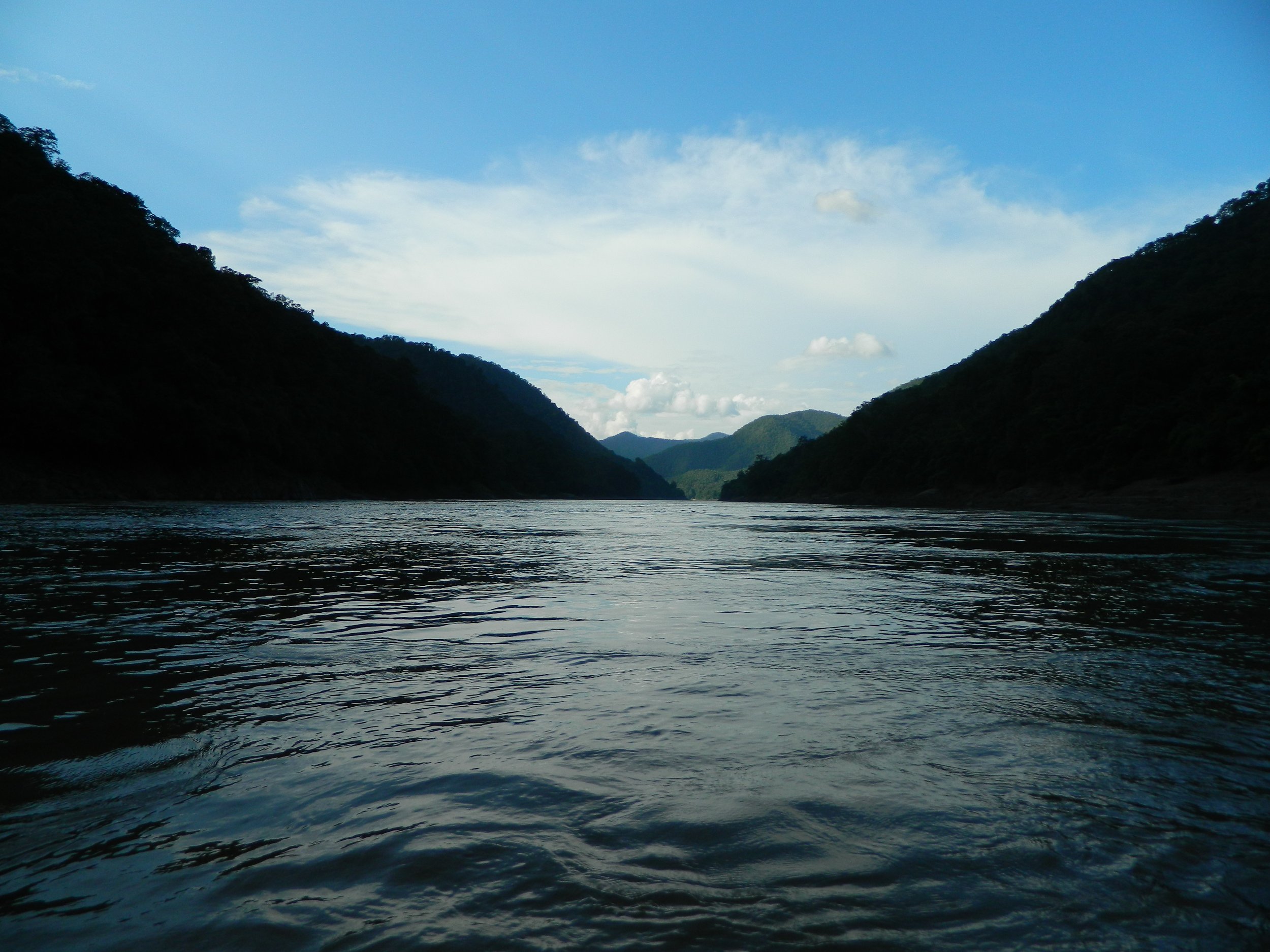
Salween Peace Park: A Model for IPCA Governance
The context of Salween Peace Park on the Thai-Burma border obviously differs from Canada in many ways. Nevertheless, we see opportunities for solidarity and mutual learning. The Salween Peace Park embodies a commitment to building peace and reconciliation that centres Indigenous self-determination and responsibilities to ancestral territories. These are the same goals that many Indigenous Nations in Canada have articulated. Salween Peace Park also offers a model for how IPCA governance can be scaled up to entire landscapes and territories. The Charter of the Salween Peace Park functions as an IPCA Constitution to coordinate decision-making at the large landscape level while empowering local communities to articulate and practice their own Indigenous laws. As such, Salween Peace Park offers a model of multilevel, nested IPCA governance that we believe might be of value to Indigenous-led conservation initiatives in Canada as well.
We look forward to further mutual learning. In solidarity!
The Salween Peace Park Governance Committee is coordinating relief supplies for Karen villagers who have been forced to flee their homes. Donations to support these efforts can be directed to KESAN through their website: https://kesan.asia/support-us/
KESAN is a community-based, non-governmental, non-profit organization that works to improve livelihood security and to gain respect for Indigenous Peoples’ knowledge and rights in Karen State of Burma, where the violence and inequities of more than 70 years of civil war have created one of the most impoverished regions in the world.
For additional information about the Salween Peace Park and other Indigenous conservation initiatives in Karen territories, please see the following resources:
· Salween Peace Park
o Website: https://kesan.asia/salween-peace-park-program-3936/
o Facebook: https://www.facebook.com/Salween-Peace-Park-105819057562017
o YouTube: www.youtube.com/channel/UCoHHaQn3DiMsGmcS_0_TYcg/videos
o Email: salweenpeacepark@gmail.com
· Karen Environmental and Social Action Network
o Website: http://kesan.asia/.
o Facebook: https://www.facebook.com/KarenEnvironment
o YouTube: https://www.youtube.com/user/KESANandYOU/videos
o Email: info@kesan.asia
· Select videos
o The Salween Peace Park: A Place for All Living Things to Share Peacefully
o Celebrating the Salween Peace Park Proclamation
o Realizing Community Representation
o Community in Peace Park Governance: "Inclusiveness in Practice"
o Salween Peace Park and Food Sovereignty During COVID-19
o Protecting Myanmar's Forests
o The Kheshorter: Indigenous Karen’s Community Forest
· Salween Peace Park Charter
o Salween Peace Park Charter (full document)
o Salween Peace Park Charter (briefer)
· Other Karen Conservation Initiatives
o Tanawthari Landscape of Life
o Thawthi Taw Oo Indigenous Park
Salween Peace Park has been covered by international media outlets such as Al Jazeera, Mongabay, Reuters, and Intercontinental Cry, as well as outlets in Burma such as The Irrawaddy and Frontier Myanmar.
The Salween Peace Park is part of a large and growing global movement of “territories and areas conserved by Indigenous Peoples and local communities”, or ICCAs. To learn more, visit the ICCA Consortium website. Salween Peace Park was recently featured in an ICCA Consortium Policy Brief on Territories of Life & Food Sovereignty.
